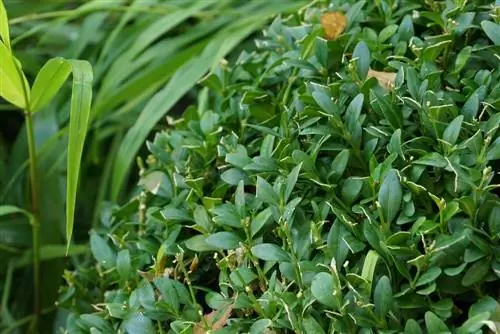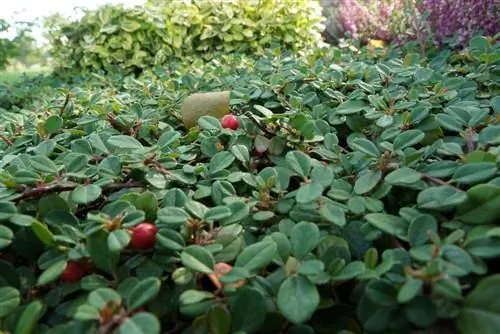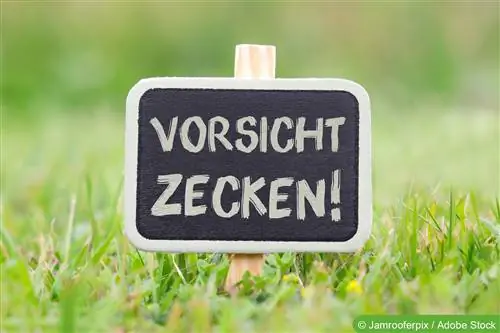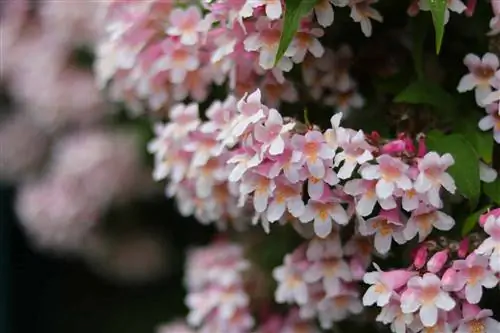- Author admin [email protected].
- Public 2023-12-17 03:39.
- Last modified 2025-01-24 12:45.
Flowers are often most fragrant late in the afternoon. That's why it's best to plant fragrant shrubs near windows, on garden seats and paths so that you can often enjoy the pleasant smell. Choose shrubs with different bloom times to keep your garden fragrant all year round: for example, star magnolia (spring), butterfly bush (summer), bearded bush (autumn), and witch hazel (winter).
Flaming Autumn
Some shrubs have beautiful autumn leaf color with bright yellow, orange or red tones. After warm, rather dry summers, the leaf color is particularly intense.
Shrubs with attractive autumn colors include: chokeberry (Aronia), serviceberry (Amelanchier), winged spindle bush (Euonymus alatus), wigbush (Cotinus coggygria), Pfaffenhütchen, bell (Enkianthus campanulatus) and viburnum (Viburnum opulus).
Give fast-growing shrubs more pizzazz
Some shrubs appear magnificent when flowering or bearing fruit, but look rather boring the rest of the year. Use your greenery specifically as a backdrop for colorful summer flower and perennial beds or, for example, for climbing plants that climb up upper lisks. You can revitalize rhododendrons, whose flowering period ends in early summer, with a border of summer-flowering busy lilies. You can also make a garden with lots of shrubs more lively by choosing some with distinctive leaf colors.
Decorative are, for example, the yellow golden barberry (Berberis thunbergii Aurea), the white-edged dogwood (Cornus alba Argenteomarginata) or the dark red purple hazel (Corylus maxima Purpurea).
Fast-growing shrubs are a setting table for birds
Birds are usually welcome in the garden because they keep pests such as caterpillars and snails at bay. With shrubs you invite the feathered helpers. They find protective places in the trees, and free breeders build their nests there. Woody plants that provide them with fruit as food in autumn and winter are particularly valuable to them.
Good plants for food for birds include rowan (rowanberry), yew, serviceberry, firethorn, elderberry, privet, sea buckthorn, holly, juniper and hawthorn.
Tip:
Plant dense, partly spiny native trees such as privet, blackthorn, holly and hawthorn in a secluded corner of the garden. They are often taken for nesting!
Colorful fruit decorations
In addition to late flowers and beautiful autumn leaves, red, yellow, white, blue or black fruits are among the special attractions in late year.
- Decorative, but partlyhighly poisonous Bear fruit: ivy, yew, honeysuckle and honeysuckle (Lonicera), privet, laurel cherry (Prunus laurocerasus), pine tree (Euonymus europaeus), viburnum (viburnum), snowberry (Symphoricarpos), daphne (Daphne), holly (Ilex aquifolium) and peat myrtle (Gaultheria mucronata).
- Inedible to slightly poisonous are the pretty fruits of barberry, firethorn (Pyracantha), dogwood (Cornus), Oregon grape, skimmia (Skimmia japonica) and cotoneaster and cotoneaster (Cotoneaster).
- Ornamental andedible fruits have chokeberry (Aronia), serviceberry (Amelanchier), cornelian cherry (Cornus mas), roses, sea buckthorn (Hippophae rhanoides) and blackthorn. For some, for example mountain ash, elderberry and hawthorn (Crataegus), the fruits are only edible after processing.
Colored branches in the winter garden
In winter the garden is largely bare except for the evergreens and appears a bit dull and boring. Shrubs with colored bark can provide an attractive remedy. Dogwoods in particular are recommended here, especially the Tatar dogwood (Cornus alba Sibirica) with red bark. Cornus stolonifera Flaviramea and the yellow willow (Salix alba Vitellina) have striking yellow branches, the Tangut raspberry (Rubus cockburnianus) impresses with its whitish-streaked bark.
Shrubs are an important part of any home garden
With the variety of shrubs, any garden can be turned into an individual outdoor room. This not only has an invigorating effect on the entire atmosphere, but can also highlight very special areas in your garden and make them appear almost perfect. And your garden will also have a few of the following areas:
- Relaxation area
- Barbecue area
- Bed border
- Terrace or even one
- final fence area
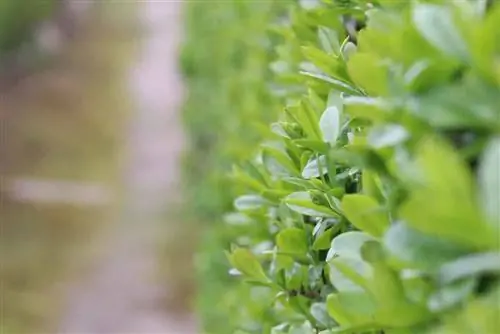
As the end of a row of plants, a windbreak for a separate area of your stay or as a fragrant border in a relaxing spot in your garden, a wide variety of shrubs know how to reveal their benefits.
Spoiled for choice
Depending on the area of use, there should be a few points that the buyer of shrubs should consider. Such decisive factors are specified with the flowering time or the size to be achieved or required. Another parameter when buying a shrub is the choice of wood, which involves three basic categorizations:
- evergreen shrubs
- winter bare undergrowth and
- shrub-like trees
If the terrace or barbecue area should shine green all year round and the bed does not necessarily need a colored dress during the rest period, the selection is focused. If a certain natural privacy screen is necessary, then the last group with its representatives of conifers, which can be very dense and large, is particularly recommended. So a lot of theoretical considerations have to be made in advance in order to create the final paradise in your own garden.
The small bushes should thrive properly
The development success of your shrubs begins with planting. This should therefore take place during the rest periods of the trees, which extends from October to April. There are of course some exceptions to this, so that species with soil balls can be planted until May and container plants can even be planted well into summer. When digging the hole in the ground, you should aim for the ball of earth to be twice the size, which is then covered with a layer of potting soil. In this breath, hobby gardeners should always look at the type of shrub, as rhododendrons and azaleas, for example, take up a larger area due to their root system and, above all, thrive very well with a layer of peat.
When planting the bushes, plastic covers should be removed, while natural protective covers made of paper or jute can be left on the plant. Now it's time to do the manual work, as all air areas between the roots must be sealed with soil as efficiently as possible: With this compaction program, careful initial watering helps so that the soil can be pressed into the last areas. After the remaining soil has been piled up and the surface has been compacted, a mulching top layer of grass, leaves or wood chips is recommended. And then you have to water regularly!
Evergreen or just temporary privacy screen
Before choosing new garden plants, the background to the planting should be considered: Do you want a colorful and blooming privacy screen for the terrace in the summer months or do you want permanent greenery as a hedge? Of course, a combination of both hedge variants is also possible, as diverse plants also provide a home for different beneficial organisms in the garden.
fast-growing hedge magic
If a flowering hedge is to serve as a privacy screen throughout the year, the rock pear and the forsythe are ideal. The forsythia blooms in spring and can be replaced by the Kolkwitzia, better known as the mother-of-pearl bush, in late spring. Dogwoods and ranunculus are just as fast-growing as buddleia, viburnum and pipe bush. Buddleia is also very popular with butterflies and will certainly attract one or two butterflies to the garden. Very pretty in its fruit clusters, but as a poisonous plant it is not suitable for the family garden, is the Pfaffenhütchen with its bright pink fruit clusters.
The ornamental currant, which is also called the blood currant because of its pretty, red flower umbels, is very popular. Alternating with evergreen hedge plants creates a magical hedge all year round, which also provides space for birds and beneficial insects.
Evergreen representatives among the fast-growing shrubs
The classic cherry laurel is suitable as a hedge plant for fast-growing permanent greenery. Cypresses, lingusters, yews and thuja provide dense privacy protection as well as providing shade. Interesting, year-round splashes of color can also be added with a loquat, which is also available commercially as Photinia.
The firethorn, on the other hand, impresses with its colorful fruits, just like the barberry, which, due to its thorns, is also suitable for fencing around properties where pets spend their time (e.g. B. dogs). The barberry can also be combined well with Mahonia.


